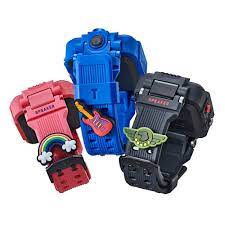These wash mitts are made of quality chenille microfiber and won’t scratch the highly polished finish of your wheels. The Rag Company is a proven brand and their product are outstanding, especially for the price.
A quality and highly absorbent drying towel such as The Rag Company Platinum Pluffle
These towel will reduce the amount of drying time considerably when used after the water blade. They are highly absorbent and scratch safe allowing you to completely dry a side of your RV without needing to slow your pace.
A pack of quality general purpose glass, mirror, and chrome microfiber towels.
These are great for wiping down windows, mirrors, chrome and polished accessories (ladders, handles, mirror housings, etc..), and cleaning around door jambs and storage compartment jambs.
A quality car wash shampoo such as Gel-Gloss RV Wash and Wax.
Gel-Gloss is readily available and cleans well. It is super slick, thick foaming, and affordable! To top it all off, it does not contain petroleum distillates which means it’s safe RVs with rubber (EPDM/TPO) roofs. It has a strong cleaning action and leaves behind a light layer of carnauba wax.
With these materials, you should cut your cleaning time literally into a tenth. If you can use a pressure washer along side these tools you’re in even better shape. To me that’s money well spent. If you happen to also own a boat, these products will work great there as well. Double bang for the buck!
What if You Live in a Water Restricted Area?
If you have to abide by water restrictions, or do not have access to water such as at a campground or in the wilderness, then I recommend you check out a Water Wash system. You find them in kits like this Waterless Wash Wax Kit from Aero Cosmetics. No hose or pressure washer is required and you’ll still be able to maintain your RV or Camper.
Blue jug and spray bottle of aero cosmetics waterless wash with a stack of blue microfiber towels.
RV roofs come in two flavors, rubber membrane (EPDM/TPO) and fiberglass. Rubber RV roof cleaning requires some special care.
You don’t want to use any strong cleaners or chemicals that contain petroleum distillates on a rubber RV roof. It will break down the roof. Other than that the cleaning process is simple. Wash. Rinse. Dry.
Rubber roofs don’t require any special protection afterward, though some may be applied to make future maintenance easier. A proven protectant is Dicor Roof Guard.
Regular maintenance is the key here. If you have mildew and other things growing on your roof, you waited too long!
As for fiberglass RV roofs, cleaning is pretty straight forward. Any decent shampoo and cleaner will suffice here. Fiberglass does have the tendency to oxidize if left unprotected. If your roof is oxidized (usually chalky or ashy in appearance and texture) then you’re likely going to need a stronger cleaner such as Davis Fiberglass Stain Remover.
Purple jug of FSR Fiberglass Stain Remover
After the roof is dry, take a moment to inspect it for cracks, tears, or peeling and missing caulk.
If your roof is clean and intact then you’re ready to move onto the sides.
Mobile RV wash and waxWhen cleaning the sides of your RV, start with the right and left sides and work from front to back. The worst dirt and grime accumulation usually gathers on the front, back, and rearward side panels.
Save wheels and tires for last. Do not use the same mop on your wheels and tires that you use on the sides. You will heavily contaminate the mop and may not be able to clean it all out. This will cause you to damage the rest of your RV during your next cleaning.
Once you’ve cleaned your RV, you most certainly need to protect it.
Yes! These toys are all covered in either plastic, fiberglass, gel coated fiberglass, or clear-coat paint. All of these materials oxidize when exposed to the elements. The more they oxidize the worse they look and the more brittle they get. Waxing your RV ensures it will stand the test of time.
You have two options, you can wax it or you can seal it with a sealant. There are two main differences between a wax and a sealant. Waxes contain natural compounds and has a relatively short lifespan on your RV (a couple to a few months). A sealant contains mostly synthetic compounds and has a relatively long lifespan (several months to a year).
Some argue that wax looks better than a sealant but that is debatable and most RV owners are more concerned with lasting protection (remember these things are TOUGH to clean!).
With that said, I tend to lean towards a sealant (sometimes labeled as a synthetic wax) when shopping for a protectant.
With that said, I tend to lean towards a sealant (sometimes labeled as a synthetic wax) when shopping for a protectant.
Since the areas of your RV that you are wanting to wax are most likely made of fiberglass or gel coat the real question you should be asking is what is the best wax or sealant for fiberglass or gel coat. See the next section for that information.
There are two main types of waxes and sealants. There are cleaner waxes and sealants and finishing waxes and sealants.
The difference between these two compounds is that cleaner waxes and sealants contain abrasives and solvents to help remove oxidation and smooth surface imperfections and finishing waxes and sealants do not.
To understand which you need we need to know what condition your RVs paint and fiberglass is in. Fiberglass and clear coat are both prone to oxidation. Fiberglass is more prone to oxidation and it’s tougher to remove. Signs of oxidation are rough surface texture, chalky appearance, and yellowing.
If you have a light case of these symptoms, you need a good cleaner wax such as Meguiar’s M5032 Marine / RV One Step Cleaner Wax.
If your oxidation is really bad you may need to start with Meguiar’s M4916 Marine / RV Heavy Duty Oxidation Remover and follow it up with a finishing wax or sealant.
Blue bottle of Meguiars 49 Marine and RV Oxidation Remover
If your RV is already in great shape and just needs to be protected, a finishing sealant such as Collinite #845 (it’s labeled as a wax but is mostly synthetic and lasts several months)
This wax is also non-staining so it’s safe on any decals you may have on your rv.



.jpg)

.jpg)
.jpg)
.jpg)



0 Comments
You are welcome to share your ideas with us in comments.
Emoji